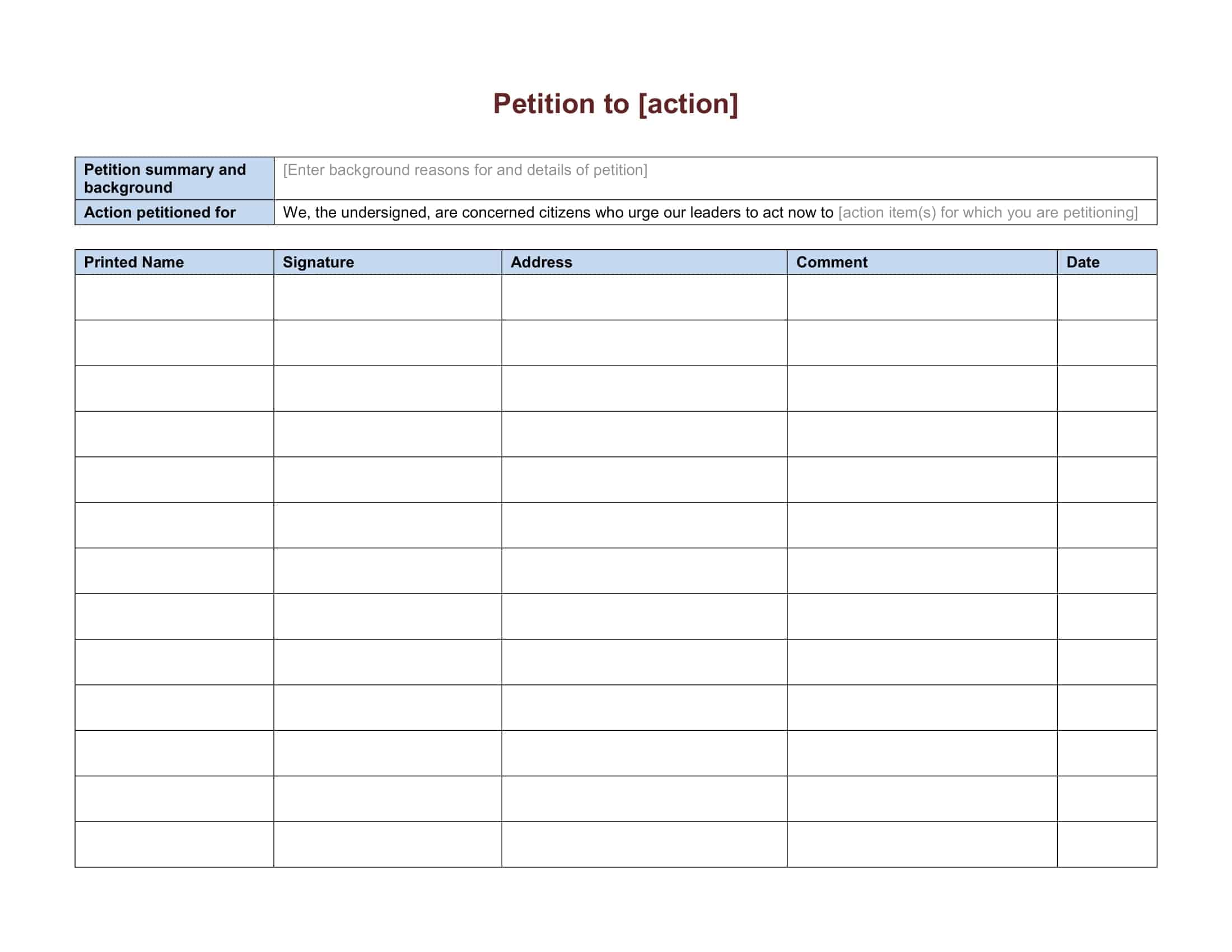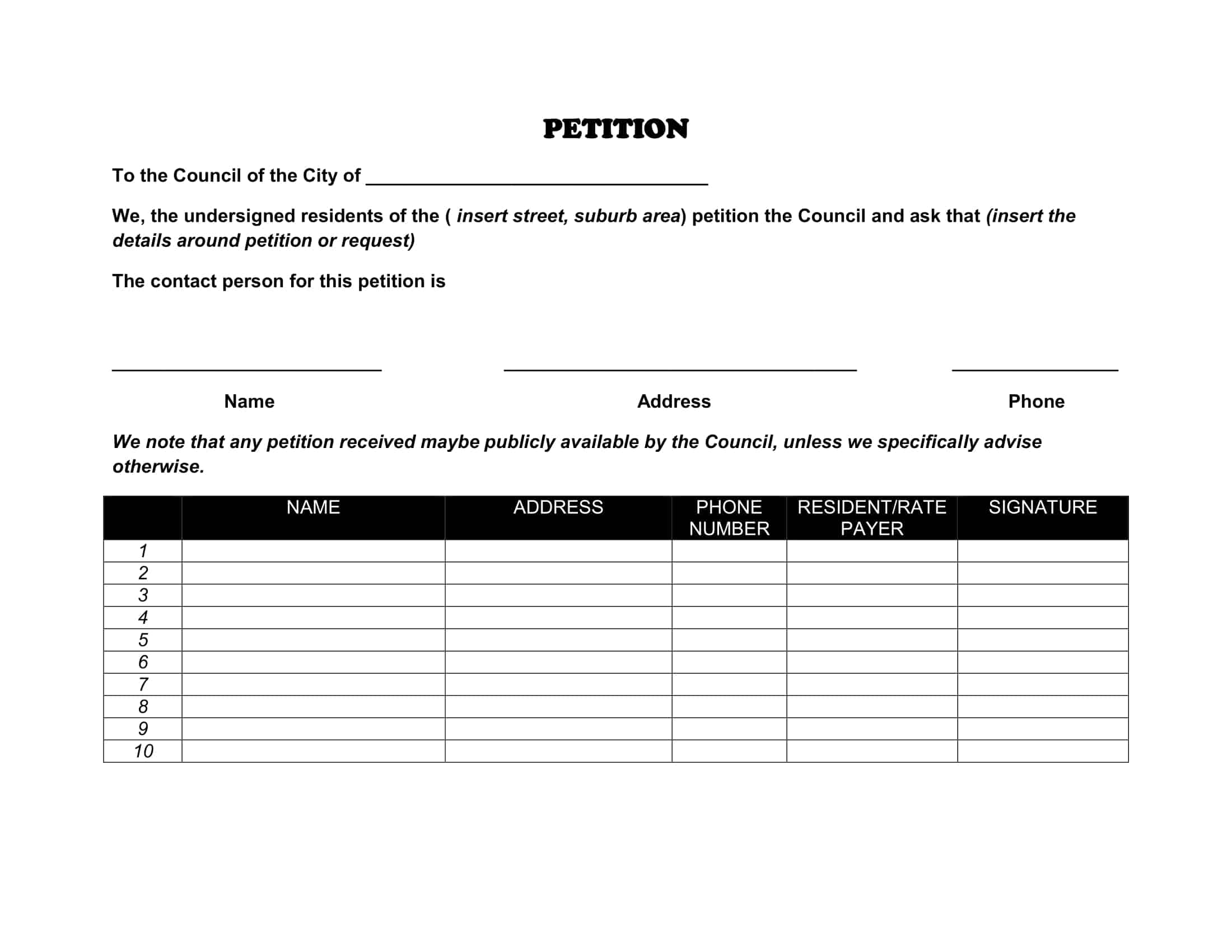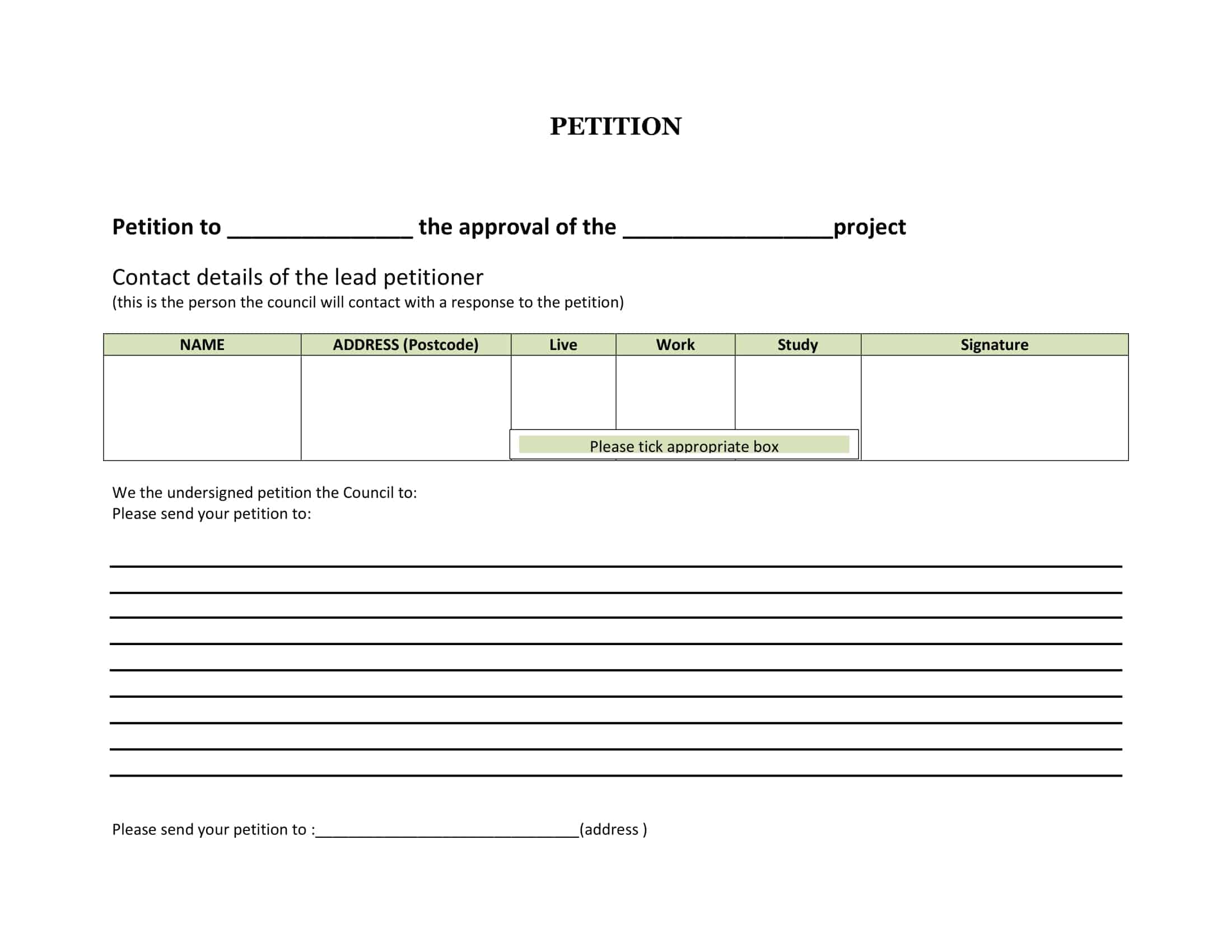Petitioning is a powerful tool for individuals and groups to bring attention to an issue and to request action from governing bodies or public officials. Whether you have personally experienced a situation that requires a petition, or you are simply curious about what a petition is, it is important to understand the purpose and process of this formal request.
A petition refers to a formal written request made to a governing body or public official to address a specific issue or grant favors, relief, or privileges. It is typically signed by multiple people, and serves as a means of drawing attention to a matter of concern and requesting action to be taken. In this guide, we will discuss the different types of petitions, how to write a successful petition, and tips for increasing the chances of having your petition heard and acted upon.
Table of Contents
Petition Definition & Meaning

A petition is a formal written request made to a governing body or public official to address a specific issue or grant favors, relief, or privileges. Petitions are typically signed by multiple people, and serve as a means of drawing attention to a matter of concern and requesting action to be taken.
The purpose of a petition is to gather support from a large number of people for a specific cause or issue. Petitions can be used to bring attention to a wide range of issues, such as political, social, or environmental concerns, and can be directed at various levels of government, from local to national.
Petitions can be delivered in various forms, the most common is a physical document containing signatures of the people who support the cause, but they can also be delivered in electronic form, such as through email or an online platform.
Petitions are an important tool for citizens to engage in the democratic process and to have their voices heard by government officials and decision-makers. They are also a way for citizens to hold elected officials and government institutions accountable for their actions.
Petition Templates
“Petition Templates” are pre-designed documents that provide a structured framework for individuals or groups to create petitions for a cause, issue, or desired change. These templates serve as valuable tools for organizing and mobilizing support by outlining the purpose, demands, and signatures needed to make a collective impact.
Petitions are a powerful means of voicing concerns, raising awareness, and urging action from individuals, organizations, or authorities. Petition templates offer a standardized format for clearly stating the issue at hand, presenting arguments or evidence, and specifying the desired outcomes or actions.
Petition templates typically include sections to introduce the petition, provide background information or context, outline specific demands or requests, and offer a space for signatures or support. They may also include space for additional comments, testimonials, or supporting evidence to strengthen the case.
Different types of petitions
There are several different types of petitions, including:
Political petitions: These petitions are aimed at government officials or political leaders and are used to address political issues or to support or oppose specific legislation.
Social petitions: These petitions address social issues such as human rights, discrimination, and social justice. They are often directed at government officials or organizations that have the power to implement change.
Environmental petitions: These petitions address environmental issues such as climate change, pollution, and conservation. They are directed at government officials, organizations, and corporations that have a significant impact on the environment.
Legal petitions: These petitions are used in legal proceedings and are typically filed with a court or government agency. They can be used to request a specific action, such as a change in a law or the release of a prisoner.
Grassroots petitions: These petitions are created and promoted by individuals or grassroots organizations, and are used to address issues that have not yet received significant attention from government officials or the media.
Online petitions: These petitions are created and promoted through online platforms and are signed by individuals through the internet. They are widely used for various types of petitions that are created by different groups or individuals.
Recall petitions: These petitions are used to remove an elected official from office before their term is completed. They require a significant number of signatures from citizens of the official’s jurisdiction in order to be considered for action.
Referendum petitions: These petitions are used to put a specific issue to a vote by the general public. They require a significant number of signatures from citizens in order to be considered for a referendum.
How To Write Petition
Writing a petition can be a powerful way to raise awareness about an issue and gather support for a cause. Here is a step-by-step guide for writing an effective petition:
Step 1: Define your goal: Before you start writing, it’s important to clearly define what you want to achieve with your petition. Are you trying to change a law, stop a development project, or raise awareness about an issue? Knowing your goal will help you focus your message and determine the best course of action.
Step 2: Research your topic: Gather information about the issue you’re addressing, including any relevant laws, statistics, or reports. This will help you make a strong case for your cause and give credibility to your petition.
Step 3: Write a clear and concise statement: Your petition should have a clear and concise statement that summarizes the issue and states your specific goal. This is known as the “petition statement” and should be included in the first sentence or two of your petition.
Step 4: Explain the problem and why it matters: In the next section, explain the problem in more detail and provide evidence to support your claim. This is where you’ll use the research you gathered in step 2. It’s important to also explain why the problem matters and how it affects the community or individuals.
Step 5: State your solution: Clearly state your solution or the specific action you want people to take. Be specific, clear, and actionable.
Step 6: Gather signatures: Once your petition is written, it’s time to gather signatures. You can use online platforms like Change.org to create a digital petition, or you can print out copies and collect signatures in person. It’s important to make sure that you’re collecting signatures from people who are eligible to sign your petition, such as registered voters or members of a particular community.
Step 7: Promote your petition: Share your petition on social media, through email, and through word of mouth. Encourage friends, family members, and community leaders to support your cause and sign your petition.
Step 8: Deliver the petition: Once you’ve collected a significant number of signatures, deliver the petition to the decision-maker or organization that has the power to take action on your issue. Be sure to follow up with them to ensure they’ve received it and to find out what the next steps are.
Step 9: Keep your supporters informed: Keep your supporters informed about the progress of your campaign and any actions you’ve taken. This will help to maintain their interest and support.
Additional tips:
– Make sure your petition is easy to read and understand.
– Be respectful, polite and avoid being confrontational.
– Include a call-to-action, for example, “Please sign and share this petition.”
– Include a deadline for signatures if possible.
– Include your contact information, so that people can contact you for more information.
A well-written and well-promoted petition can be a powerful tool for bringing attention to an issue and creating change. Keep in mind that petitions should be a part of a larger campaign, and that it’s important to follow up with decision-makers and continue to raise awareness about the issue after the petition is delivered.
A Guide to Promoting Your Petition
Promoting your petition is an essential step in getting the signatures and support you need to achieve your goals. Here are some ways to effectively promote your petition:
Use social media
Share your petition on social media platforms like Facebook, Twitter, and Instagram. Use relevant hashtags and tag relevant organizations or individuals to increase visibility.
Reach out to influencers
Identify influencers in your community or industry who may be willing to support your cause. Reach out to them and ask them to share your petition with their followers.
Use email
Send out an email blast to your friends, family, and contacts. Ask them to sign and share your petition.
Create a website
Create a website to promote your petition and provide information about your campaign.
Use traditional media
Reach out to local newspapers, radio stations, and television stations to see if they would be willing to cover your campaign.
Host events
Host events to raise awareness about your cause and encourage people to sign your petition.
Use targeted advertising
Use targeted advertising on social media platforms to reach specific demographics and raise awareness about your campaign.
Make it easy to share
Make it easy for people to share your petition by including social share buttons on your website and in your email signature.
Follow-up
Keep your supporters informed about the progress of your campaign and send reminders to sign the petition.
Keep it simple and actionable
Make sure your petition is easy to read and understand, and include a clear and actionable call-to-action, such as “Please sign and share this petition.”
Remember that promoting your petition is an ongoing process, and it’s important to keep pushing and engaging with your audience to get the support and signatures you need to achieve your goals.
FAQs
Who can start a petition?
Anyone can start a petition. It can be an individual, a group of people, or an organization.
How do I gather signatures for my petition?
You can gather signatures for your petition by using online platforms like Change.org to create a digital petition or by printing out copies and collecting signatures in person. It’s important to make sure that you’re collecting signatures from people who are eligible to sign your petition, such as registered voters or members of a particular community.
How many signatures do I need for my petition to be effective?
The number of signatures required for a petition to be effective will vary depending on the issue and the decision-maker or organization you’re addressing. In general, the more signatures you have, the more likely it is that your petition will be taken seriously.
What happens after I deliver my petition?
After you deliver your petition, you should follow up with the decision-maker or organization to ensure they’ve received it and to find out what the next steps are. It’s important to keep your supporters informed about the progress of your campaign and to continue to raise awareness about the issue.
Can I create a petition on any topic?
You can create a petition on any topic, but it’s important to make sure that your issue is relevant and that the decision-maker or organization you’re addressing has the power to take action on your issue.



































![Free Printable Roommate Agreement Templates [Word, PDF] 1 Roommate Agreement](https://www.typecalendar.com/wp-content/uploads/2023/06/Roommate-Agreement-150x150.jpg)
![Free Printable Credit Card Authorization Form Templates [PDF, Word, Excel] 2 Credit Card Authorization Form](https://www.typecalendar.com/wp-content/uploads/2023/06/Credit-Card-Authorization-Form-150x150.jpg)
![Free Printable Stock Ledger Templates [Excel,PDF, Word] 3 Stock Ledger](https://www.typecalendar.com/wp-content/uploads/2023/08/Stock-Ledger-150x150.jpg)
